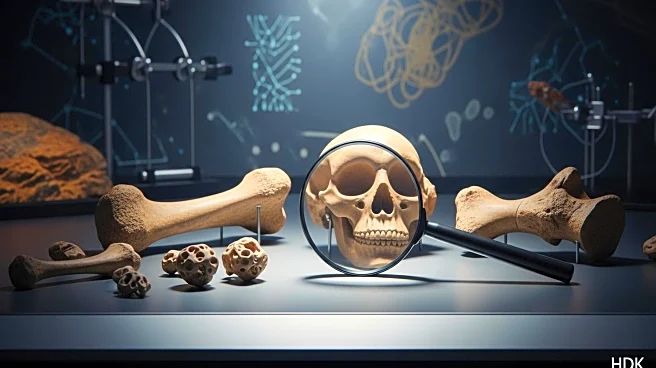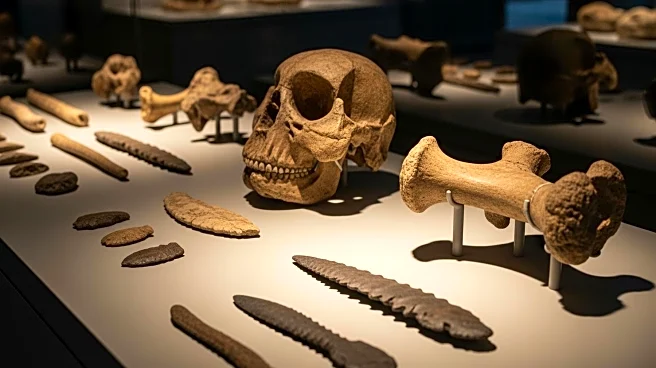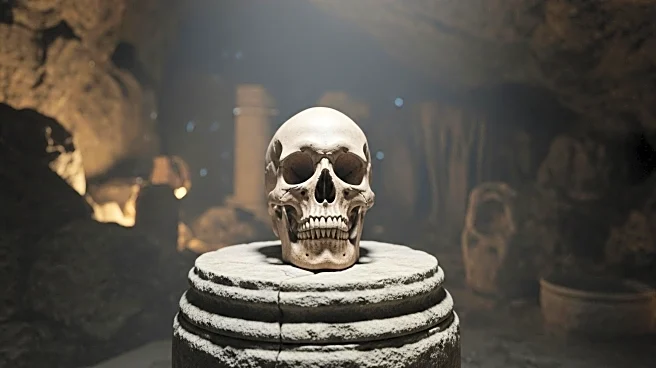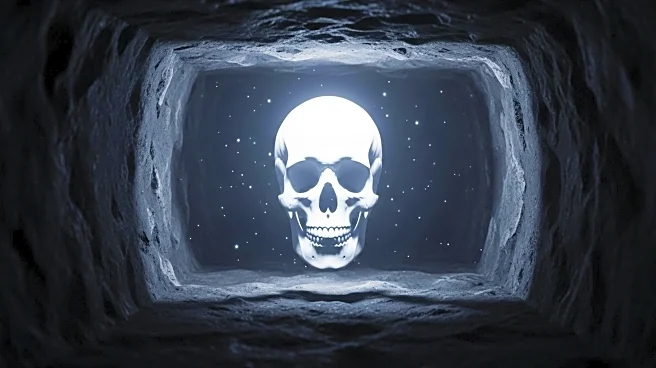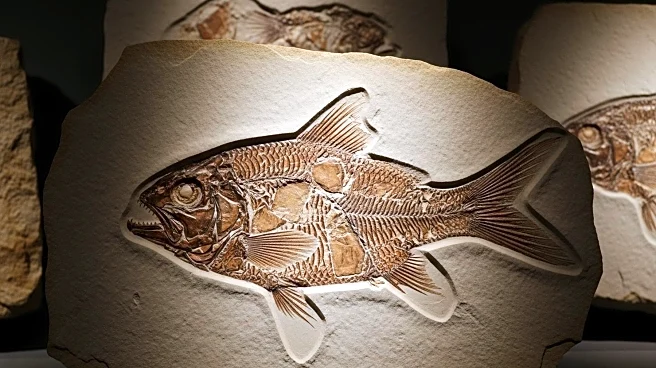What's Happening?
A team of international scientists, led by UNLV anthropologist Brian Villmoare, has uncovered new fossils at the Ledi-Geraru site in Ethiopia, revealing a previously unknown species of the genus Australopithecus. These fossils, which include 13 teeth, suggest that Australopithecus and the oldest specimens of Homo coexisted between 2.6 and 2.8 million years ago. This discovery challenges the traditional view of human evolution as a linear progression and supports the idea of a more complex evolutionary tree with multiple branches. The new species is distinct from the well-known Australopithecus afarensis, famously represented by 'Lucy'. The findings were published in the journal Nature on August 13, 2025.
Why It's Important?
This discovery has significant implications for our understanding of human evolution. It suggests that the evolutionary path of humans is not a straightforward progression but rather a complex branching process. This challenges the conventional narrative and highlights the adaptability and diversity of early human ancestors. The coexistence of different species in the same region indicates that human evolution involved multiple experiments in adaptation to changing environments. This finding could reshape the scientific community's approach to studying human ancestry and evolution, emphasizing the need for more comprehensive fossil records to understand the diversity and adaptability of early human species.
What's Next?
Further research and fossil discoveries are necessary to fully understand the differences between the newly discovered Australopithecus species and the genus Homo. Scientists aim to find additional fossils to clarify how these species coexisted and adapted to their environment. The research team, which includes members from multiple universities, will continue to explore the Ledi-Geraru site and other potential locations to uncover more evidence of early human evolution. These efforts could lead to a more detailed understanding of the evolutionary processes that shaped modern humans.
Beyond the Headlines
The discovery of a new branch in human evolution raises questions about the adaptability and survival strategies of early human ancestors. It suggests that as the climate in East Africa became drier, different species experimented with various ways to survive, leading to the extinction of some and the emergence of others. This pattern of evolution is not unique to humans and reflects broader evolutionary trends observed in other species. The findings also underscore the importance of interdisciplinary collaboration in paleoanthropology, as researchers from different fields and institutions work together to piece together the complex puzzle of human history.
